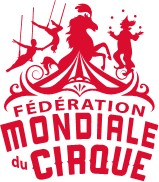THERE IS MORE TO THE CIRCUS THAN IT APPEARS
By Dominique Jando, Researcher, historian, author and artistic director
In 1931, the French journalist Pierre Bost wrote in the preface of his book, Le Cirque et le Music-Hall, “Circus and variety are not only brilliant and stunning spectacles, they are also and principally very precise and very clear spectacles, behind which there is certainly something to understand. It would be insulting our pleasures to just be satisfied with our subjection to them.” His statement may look more apologetic than explanatory, but there is some truth here.
Philip Astley, the inventor of the modern circus, established his Riding School in London in 1768. However, if one wants to be truly accurate, he gave his first circus performances two years later, in 1770, when he started adding to his equestrian displays the visual entertainers who used to appear on the theater stages and pleasure gardens of London. These entertainers had a much more ancient history than the trick riders who developed the circus in England and abroad in the 18th century (i.e. Astley, Charles Hughes, Antonio Franconi, John Bill Ricketts, to name but a few).
Talented equestrians fascinated a large audience that had a vested interest in horsemanship: Horses were part of everyone’s daily life until the end of the 19th century—indispensable partners in transportation, agriculture, war and leisure. Astley and his colleagues were able to do things with or on their horses that ordinary people couldn’t; they not only amazed, they earned respect.
Like these horsemen, visual entertainers, who had displayed their skills since the dawn of humanity and developed as a corporation in the Middle Ages, amazed their public because they were able to perform extraordinary feats of balance, acrobatics, juggling (which, in medieval Europe, also meant magic) and even wild animal “taming.” Yet there was a difference: they dealt in areas that were not, in a practical way, familiar to their audiences; what they did appeared at times quasi-miraculous—the result, some even believed, of superhuman abilities of demonic origin. Nonetheless, what they did could also be transformed into potent metaphors, a fact that didn’t escape the powers that be, whether secular or religious.
Which is not surprising. In China, visual entertainers’ arts appeared in a codified form in the harvest festivals of the Hang Dynasty, about 2,200 years ago, when some farmers and craftsmen participated in their village’s festivities performing acrobatics, juggling and balancing skills with everything on which they could put their hands: cups and saucers, benches, chairs, ladders, jars, and all sorts of tools they could find in their farm or their workshop. What they did was playing a ritual of survival: By performing extraordinary feats, often using familiar objects, they not only showed they could survive another winter, but also that they had become stronger and overcome their apparent human restraints—to the point, perhaps, of becoming super-humans. It made their community feel good and invigorated. It was, too, a simple, yet spectacular way to convey an important message.
In Europe, the Church noticed these entertainers’ specific talent, and, in the Middle Ages, used it to create visual metaphors in the spectacles they produced to celebrate various religious festivals. There, visual entertainers could perform “miracles” of a divine nature, legitimized by the Church—the predominant power all over Europe. Yet, when they went on to perform the same skills severally from religious or “divine” context, the Church quickly viewed them as unwelcome competition and casted them off. Nonetheless, they continued to amaze and send the same message: Yes, we can fly, dance on a wire, maintain seven objects in the air with just two hands, interact and get along with wild animals, all of it with grace, artistry and apparent ease.
Circus doesn’t need convoluted stories to send its message. It speaks to our guts, to our ever-present need to sense our potential ability to better ourselves, even if those who demonstrate it are obviously extraordinary individuals: they are human, nonetheless. The Circus’s language is close to abstraction, yet it can touch us in many ways. Vil Golovko and his Russian flying act, “The Cranes,” performed in the United States for close to a decade, to nightly standing ovations. The act illustrated a Russian song about the war (World War II in its case) and the fallen heroes whose souls fly over our land in the form of cranes and continue to protect us. When one knows the act’s theme and the song that inspired it, Piotr Maestrenko’s extraordinary staging and the images he created become very clear. The American audiences, however, were not familiar at all either with the song or with the Russian legend of the cranes—but still, they were deeply moved by this act, as was everyone who ever saw it, whether in Russia, America or at the Festival of Monte Carlo.
That’s the power and legacy of the Circus: There is much more to it than it appears.

